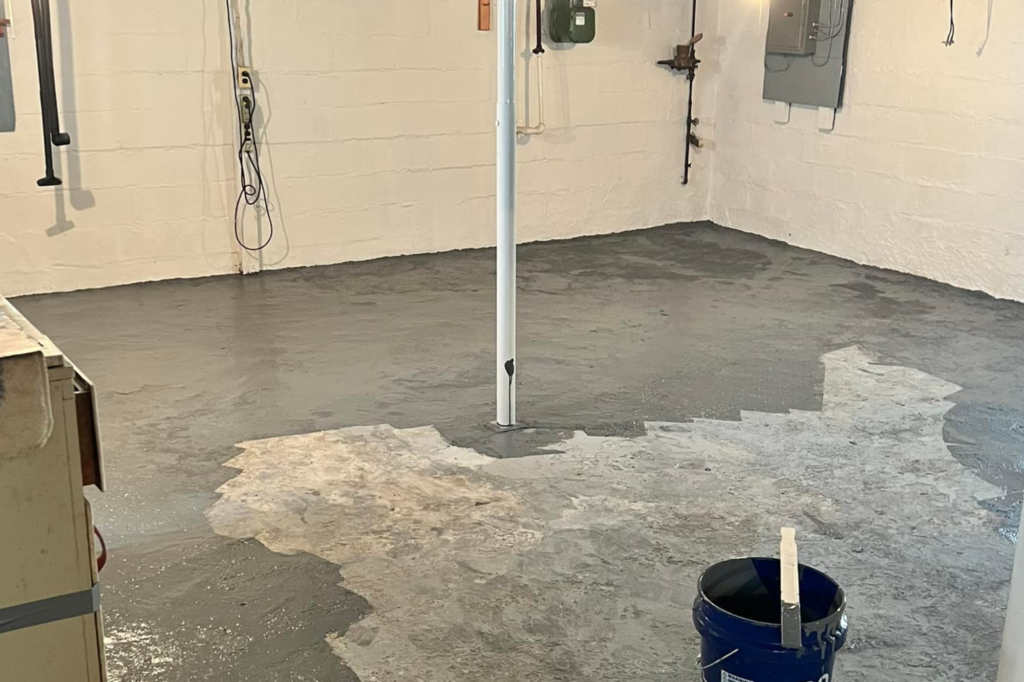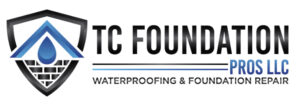You might think that concrete installation is straightforward and can be done anytime, but timing truly affects your project’s success. Seasonal variations in temperature, humidity, and precipitation can drastically impact the curing process and overall durability of the concrete. It’s essential to understand how these factors can influence your installation schedule and quality. By considering these seasonal aspects, you can avoid costly setbacks and guarantee a smoother workflow. So, what specific strategies can help you navigate these challenges effectively?
Importance of Timing
When planning a commercial concrete installation, timing isn’t just a detail; it’s a critical factor that can influence the entire project’s success. You need to take into account project scheduling meticulously, as it sets the pace for every phase of your installation. Delays can lead to increased costs and ripple effects that impact subcontractors and other trades, creating a sense of urgency that could compromise quality.
Material selection plays a pivotal role in this timing equation. You’ve got to guarantee that the materials you choose are readily available and suited for the project’s specific demands. For instance, using high-strength concrete may be ideal for heavy loads, but if it requires an extended curing time, it could derail your timeline. Confirming that your materials align with your project schedule not only enhances efficiency but also fosters a collaborative atmosphere among your team.
Moreover, coordinating deliveries is essential. If your concrete mix arrives late, it can throw off the entire operation, affecting labor schedules and profitability. By aligning your project scheduling with material selection, you create a seamless workflow that minimizes downtime and maximizes productivity.
Seasonal Temperature Effects
Although seasonal temperature variations can sometimes seem like a minor detail, they greatly impact the performance and curing of concrete. When you’re managing commercial concrete services installations, understanding how temperature fluctuations affect your project is essential.
In colder months, lower temperatures can slow the curing process, potentially leading to weaker concrete and surface issues. On the flip side, excessive heat can cause rapid evaporation of moisture, which compromises the hydration process essential for strength development.
To mitigate these risks, employing effective insulation techniques is key. Insulating blankets or heated enclosures can help maintain a stable temperature, ensuring the concrete cures properly regardless of external conditions.
It’s also beneficial to schedule pours during the warmer parts of the day and protect the surface with curing compounds that reduce moisture loss.
In warmer weather, take precautions to avoid the rapid loss of water. Using retarders in your mix can extend the working time, allowing you to finish the surface without rushing.
Additionally, employing shading techniques or using windbreaks can help manage the effects of direct sunlight and wind on your concrete.
Ultimately, being proactive about seasonal temperature effects can enhance the durability and longevity of your installations. By strategically addressing these factors with the right techniques, you’ll not only improve your outcomes but also foster a sense of trust and reliability among your clients and team.
Humidity Considerations
Humidity plays an essential role in the curing and overall performance of concrete, especially in commercial installations. You’ll need to pay close attention to humidity levels, as they can notably impact both the setting time and the strength development of your concrete. Concrete services should be designed to account for these factors, ensuring durability and long-lasting results. Proper humidity management is key to achieving a strong, resilient finish that stands up to the demands of commercial projects.
High humidity can slow down the curing process, leading to potential issues such as delayed finishing or improper strength gain. Conversely, low humidity can cause rapid evaporation of moisture, resulting in surface cracking and compromised durability.
Implementing effective humidity control strategies is vital for successful moisture management. One approach is to monitor the environmental conditions closely, using hygrometers to track humidity levels.
If you find yourself in a high-humidity environment, be prepared to adjust your curing methods. This might involve extending the curing period or using curing compounds that help retain moisture.
On the other hand, if humidity is low, consider employing windbreaks or evaporation retardants to minimize moisture loss. Additionally, scheduling your concrete pours during cooler parts of the day can help mitigate rapid evaporation.
Rain and Precipitation Challenges
Managing environmental factors doesn’t stop at humidity; rain and precipitation present their own set of challenges for commercial concrete installations. When you’re planning your project, understanding rainwater management becomes vital. Heavy rainfall can lead to surface runoff, which may wash away freshly poured concrete or compromise its structural integrity. You’ll want to guarantee that your site has effective drainage systems in place to mitigate these risks.
Precipitation forecasting is another important tool in your strategy. By staying informed about upcoming weather conditions, you can adjust your timeline accordingly. If rain is predicted, rescheduling your pour may be necessary. This not only safeguards your materials but also helps maintain your project’s schedule and budget.
Moreover, if rain is unavoidable, consider using protective coverings or tarps to shield the concrete during and after pouring. These measures can help maintain ideal curing conditions. Always keep in mind that the first 24-48 hours after pouring are essential for the concrete’s strength development.
Lastly, educating your crew on the implications of rain on the curing process can foster a culture of vigilance and preparedness. Sharing knowledge about rainwater management techniques guarantees that everyone on the team understands their role in maintaining the quality of the installation. Implementing these strategies is a key part of delivering the best commercial concrete services, ensuring every project remains strong and durable despite weather challenges.

Winter Installation Precautions
When temperatures drop, maintaining the integrity of your concrete installation requires careful planning and execution. To sustain the quality of your work during winter, you’ll need to prioritize frost protection from the very beginning. This means preparing your site meticulously; consider using insulated blankets or heated enclosures to shield freshly poured concrete from harsh elements.
Before you pour, check the weather forecast and plan your installation around the best conditions possible. Using high-early-strength concrete mixes can be advantageous, as they gain strength more quickly than standard mixes. Additionally, consider incorporating accelerators to help speed up the curing process, but be cautious about the type and dosage, as excessive amounts can lead to cracking.
During the curing phase, apply effective curing techniques to guarantee your concrete reaches its ideal strength. Covering the surface with insulating materials can help retain heat while also minimizing moisture loss.
Monitoring the temperature of the concrete is vital; you may need to use thermocouples to confirm it stays within the recommended range.
Lastly, stay vigilant for signs of frost damage. Inspect your installation closely for any surface defects or other issues that could compromise its integrity.
Summer Pouring Strategies
Although pouring concrete in summer can present unique challenges, strategic planning can help you achieve ideal results. High temperatures and direct sunlight can accelerate the curing process, leading to issues like cracking and weakened strength.
To mitigate these risks, consider starting your pours early in the morning or later in the afternoon when the summer weather is cooler. This timing can reduce the impact of temperature on your mix.
Moreover, prioritize the use of specific curing techniques. One effective method is to apply curing compounds immediately after finishing the surface. These compounds form a membrane that retains moisture, which is essential for proper hydration.
Alternatively, wet curing by covering the concrete with burlap or plastic sheeting can be beneficial, guaranteeing that the surface stays moist during the critical curing period.
You should also monitor the ambient temperature and adjust your mix design accordingly. Adding retarders can slow down the setting time, allowing for better workability in the heat.
Additionally, using ice or chilled water in your mix can help control the initial temperature, further reducing the risks associated with summer pouring.
Lastly, always keep your team informed and well-prepared. Make sure everyone understands the importance of these strategies and how to implement them effectively.
Best Practices Year-Round
To guarantee ideal concrete installation year-round, it’s important to adapt your approach based on seasonal conditions. Whether you’re pouring in the scorching heat of summer or the frigid cold of winter, understanding how temperature and humidity affect concrete is significant.
Always start with thorough weather monitoring; check forecasts for temperature fluctuations and precipitation. This knowledge will guide your timing and methods.
In cooler months, make sure that you use heated enclosures or insulating blankets. This helps maintain optimal curing temperatures, reducing the risk of cracking and facilitating proper hydration. For concrete curing, consider using accelerators to speed up the process without compromising quality.
Conversely, in summer, you’ll want to manage hydration carefully. Use curing compounds to maintain moisture and schedule pours during cooler parts of the day to minimize evaporation.
Moreover, it’s crucial to maintain consistent communication with your team. Make sure everyone understands the specific practices for each season. Collaboration is key; sharing insights about successful techniques can foster a sense of belonging and elevate your project’s success.
Finally, document all procedures and results. This data won’t only help you refine your practices but also create a valuable resource for future projects.
Wrap-Up
In commercial concrete installation, timing is as essential as the foundation itself. By understanding seasonal effects—temperature, humidity, and precipitation—you can plan pours that maximize quality and efficiency. Implementing strategies tailored to winter and summer conditions will protect against potential setbacks. TC Foundation Pros LLC emphasizes proactive planning, which not only streamlines operations but also promotes teamwork among your crew. Keep these best practices in mind year-round to guarantee your projects stand strong and resilient, just like the concrete you pour.
